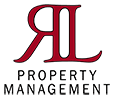 First-time property investors often ask if there is a rule of thumb for calculating maintenance costs. While it would certainly be easier from a budget planning perspective to apply a blanket rule when deciding how much to set aside in reserves, an approach like this is far less accurate. To be successful with your investment as a property owner in Columbus, it pays to be strategic. In this post, we’ll share some commonly considered rules of thumb for calculating maintenance costs and offer our perspective on more effective ways to run the numbers.
First-time property investors often ask if there is a rule of thumb for calculating maintenance costs. While it would certainly be easier from a budget planning perspective to apply a blanket rule when deciding how much to set aside in reserves, an approach like this is far less accurate. To be successful with your investment as a property owner in Columbus, it pays to be strategic. In this post, we’ll share some commonly considered rules of thumb for calculating maintenance costs and offer our perspective on more effective ways to run the numbers.
Ballpark Ways to Estimate Maintenance Expenses
A couple ideas have surfaced in the investor world as ways to estimate maintenance expenses for property owners. Though perhaps intriguing, we urge you to use caution when considering them as they may not be the most accurate for your use case.
One idea some consider is to budget 10% of their rental cost toward maintenance. The problem with this line of thinking is that maintenance costs are completely unrelated to the rent.
For example, the cost to replace a water heater is roughly the same whether you’re charging $800 or $3,500 for rent. While, yes, the upfront finishes may have cost more on the $3,500 rental property, the ongoing maintenance for the two properties is not that different. When you’re trying to predict ongoing operating costs for a property, using the percentage of rent is generally not a good rule of thumb.
Another rule of thumb some investors use to estimate maintenance costs is to use a dollar-per-square-foot measure. While this may get you closer to actual costs, it can still cause problems, especially if you have a bigger home.
Ways to More Accurately Predict Maintenance and Operating Costs
Rather than the size of the home or how much you’re charging for rent, we have found the following factors to be more indicative of maintenance expenses in an investment property:
- The home’s age
- Its mechanicals and what kind they are
- The number of bathrooms (as they have more electrical and plumbing relative to a bedroom)
- The current age of the long-lived items at the property, including its roof, windows, siding, etc.
These variables may make expenses difficult to predict, but they are the types of things property owners should be thinking about when evaluating maintenance expenses on a potential investment property in Franklin County.
Additionally, it’s essential to also consider the efforts you as the property owner put into maintenance. Expenses like mowing the grass, clearing snow, and other maintenance-like tasks and repairs on a property cost money. Even if you are doing the work yourself, it’s not “free.” We sometimes call this “sweat equity withdrawal” because owners are essentially paying themselves to mow the grass. Whether you do the work yourself or pay someone else to take care of it for you, this is an expense that needs to be included in expense calculations for maintenance.
Contact Us at RL Property Management to Ask Your Questions
Rental property ownership comes with a long list of idiosyncratic repairs. This makes it difficult to apply a general rule of thumb for estimating costs. Instead, we recommend considering your unique property as you make educated assessments about its current condition and future costs.
To learn more about owning and investing in a rental property in Franklin County, contact our team at RL Property Management.
